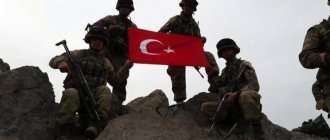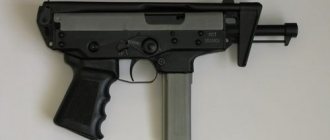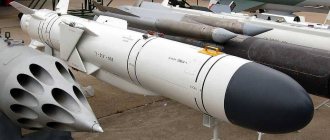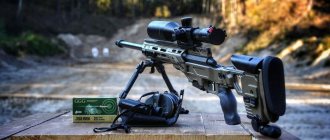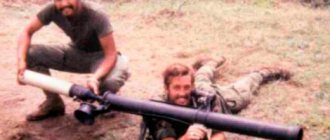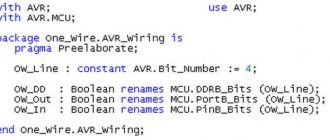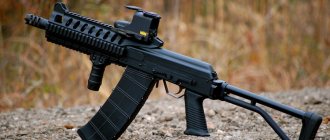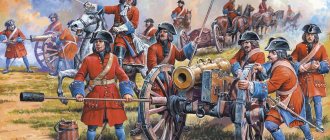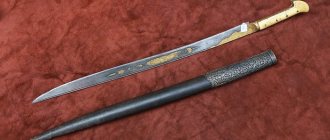On May 29, air defense duty officers of the Western and Southern military districts discovered the approach of American B-1B Lancer strategic bombers. The Russian Ministry of Defense reported this.
Air defense systems detected US Air Force military aircraft over the Black and Baltic Seas. After this, Su-27P and Su-30SM fighters were scrambled to intercept. They approached the bombers at a safe distance and accompanied them until the planes changed course. After completing the task, the Russian fighters returned to their bases.
B-1B Lancer bomber. Photo: www.globallookpress.com/ Antonia Sehlstedt
It is known that the B-1B Lancer bombers came from the 28th Bomb Wing at Ellsworth Air Force Base in South Dakota. During the exercise, they practiced the use of AGM-158C LRASM long-range anti-ship missiles.
Subsequently, the American publication The Drive suggested that the past flight demonstrated how the US Air Force is capable of supporting contingents in Europe and the Black Sea, “where they could pose a particularly serious problem for the Russian fleet.”
What is known about the B-1B Lancer bombers?
The B-1B Lancer bomber was developed in the 1970s and 80s by Rockwell International. It has been in service with the US Air Force since 1985. The aircraft were originally designed to carry nuclear weapons, but were converted and equipped with conventional weapons in the mid-1990s. Today, the manufacturer of bombers is Boeing.
Since 2001, these aircraft have been regularly used in combat operations in Afghanistan, Iraq, Syria and Libya. The B-1B Lancer holds over 50 world records for speed, range, load and climb rate. This aircraft is the only one in service with the US Air Force with a variable-sweep wing.
Question answer
Is it true that the US stole technology for the F-35 from us? The bomber has radar stealth technology and a maximum speed of Mach 1.25. It can fly at ultra-low altitudes while following the terrain. If necessary, a system of four individual ACES II ejection seats is used to rescue the crew, each of which has its own emergency hatch. Thus, each crew member can eject independently of the others. In this case, it is impossible to leave the B-1B at the same time; only sequential ejection is provided.
Bombers
Rockwell B-1 Lancer. Strategic bomber. (USA)
The Rockwell B-1 Lancer is an American supersonic strategic bomber with variable sweep wings. Developed in the 1970s and 80s by Rockwell International. It has been in service with the US Air Force since July 27, 1985. It was created as a carrier of nuclear weapons to replace the B-52, but in the early 1990s, the conversion of B-1 aircraft to equip them with conventional weapons began. The final version of the bomber (B-1B) implemented the concept of a low-altitude air defense breakthrough by flying at ultra-low altitudes and following the terrain.
To shape the appearance of the B-1, back in 1965, a series of research programs were carried out according to the following basic requirements: high survivability of the bomber fleet in the event of a first strike by the enemy, long-range subsonic cruising flight, deep penetration into enemy airspace. The developers had plenty of problems, but they were able to achieve the unique characteristics of the initial survival of the B-1, which in some respects was 2-3 times superior to the B-52. The FB-111 was capable of competing with the B-1 in this regard, but it did not have the required flight range. Therefore, as a retaliatory strike weapon among American aviation systems, the B-1 had no equal.
Rockwell B-1 Lancer. Strategic bomber. (USA)
In addition, by choosing the main design solutions (variable sweep wing and uprated engines) in the aircraft concept, it was possible to coordinate the requirements for survivability on the ground and during an air defense breakthrough.
The B-1 was virtually out of competition, and on October 2, 1981, US President Reagan announced the decision to build 100 aircraft in an improved version of the B-1B. The first of them took off on October 18, 1984. Approximately 18,000 working drawings were developed for its production, and spare parts for each aircraft include no less than 460,500 parts.
On July 4 and September 17, 1987, the B-1B set 36 world speed and range records in flights with a load of 30,000 kg on closed routes, in the first case 2000 km long, in the second - 5000 km. In August 1993, as part of an exercise, two B-1Bs flew around the world with one stopover.
Rockwell B-1 Lancer. Strategic bomber. (USA)
But there were also a number of technical problems. First of all, the unsatisfactory performance of the defensive system. In this regard, the US Air Force in 1992 decided to conduct a three-phase, 10-year program to improve the B-1B fleet. It is planned to improve the radar radiation warning system and increase the characteristics of on-board jamming stations when flying at medium and high altitudes.
According to the testimony of Honored Military Pilot of Russia P.S. Deinekin's B-1B is inferior to our Tu-160 in a number of characteristics, maximum payload and speed, range, but the aerobatic qualities of both machines are approximately the same. The general also noted the advantages of the American machine in which he himself flew: the bomber’s great capabilities in terms of overloads, rolls, altitude range, good ergonomics, high quality instruments in the cockpit.
Armament: Three internal compartments can hold up to 84 Mk.82 bombs of 227 kg (500 lb) caliber or 24 Mk.84 bombs of 907 kg (2,000 lb) caliber; or up to eight AGM-86B air-launched cruise missiles, 24 AGM-69 short-range missiles, 12 B-28 or B-43 nuclear unguided bombs, or 24 B-61 or B-83 bombs; similar weapons can also be placed on eight external slings under the fuselage.
Rockwell B-1 Lancer. Strategic bomber. (USA)
Characteristics:
| TTX B-1 of various modifications | ||
| B-1A | B-1B | |
| Specifications | ||
| Crew | 4 (commander, pilot, weapons operator and defensive systems operator) | |
| Length, m | 46 | 44,81 |
| Wing span, m (at minimum/maximum sweep angle) | 41,67 / 23,84 | |
| Height, m | 10,24 | |
| Wing area, m² | 181,2 | |
| Wing aspect ratio | 9,6 / 3,14 | |
| Wing taper ratio | 3,5 / — | |
| Leading edge sweep angle | 15° / 67,5° | |
| Wing profile | NA69-190-2 | |
| Chassis base, m | 17,53 | |
| Chassis track, m | 4,42 | |
| Empty weight, kg | 64 860 | 86 180 |
| Maximum take-off weight, kg | 176 800 | 216 365 |
| Power point | 4 × F101-GE-100 turbofan engines | 4 × F101-GE-102 turbofan engines |
| Afterburner thrust, kN | 4 × 75,6 | 4 × 64,9 |
| Afterburner thrust, kN | 4 × 132,8 | 4 × 136,9 |
| Flight characteristics | ||
| Maximum speed, km/h | 2300 (M=2.22) | 1328 (M=1.25) (at 15,240 m) 1160 (M=0.92) (at 61-152 m) |
| Practical range, km (without refueling) | 9817 | 12000 |
| Practical ceiling, m | 18 900 | 18 290 |
| Wing load, kg/m² (calc.) (At maximum take-off weight) | 975,7 | 1194,1 |
| Thrust-to-weight ratio (calc.) (At maximum take-off weight with/without afterburner) | 0,306 / 0,174 | 0,258 / 0,122 |
| Armament | ||
| Combat load, kg | 34 020 | 56,700 (34,000 + 22,700 on external suspensions) |
| Air-to-surface missiles | 24+8 × AGM-69 (internal + external) | 16 × AGM-129 24 × AGM-86 24 × AGM-158 |
| Air bombs | 24 × B61 or B63 84 × Mk 82 24 × Mk 84 30 × CBU-87/89/97 30 × CBU-103/104/105 24 × GBU-31 15 × GBU-38 84 × Mk 62 mines 8 × Mk mines 65 | |
Specifications:
- engine type - 4 turbofans General Electric F-101-GE-102;
- wingspan, m - 41.80 (maximum); 24.10 (minimum);
- aircraft length, m - 44.50;
- aircraft height, m - 10.36;
- wing area, m2 - 181.16;
- empty weight of the aircraft, kg - 86,183;
- maximum take-off weight, kg - 216,634;
- fuel, kg - 120 326;
- thrust, kN - 4×64.94 (unforced), 4×136.92 (forced);
- ferry range, km - 12,000;
- practical range, km - 8,195 (without refueling), up to 17,530 (with refueling);
- crew - 4 people. (two pilots and two weapons and defense systems operators);
- weapons, maximum load - up to 34,019 kg (in the bomb bay), up to 22,679 kg (on external slings).
Bomber B-1B Lancer – video
The first flight of the prototype took place on December 23, 1974. Supersonic speed of 2.2 M was achieved on October 5, 1978, and the pre-production B-1A prototype took off on February 14, 1979. Back in 1977, US President J. Carter refused the B-1 aircraft production program in favor of the KR creation program, but with the coming to power of the R. Reigen administration, the B-1 testing program as the main multi-purpose supersonic strategic bomber was resumed, and in 1981 the intention was announced to purchase 100 B bombers for the US Air Force -1V. The first production B-1B took off on October 18, 1984, and on July 27, 1985, the delivery of serial B-1B strategic bombers called “Lancer” to the US Air Force began.
Unlike the pre-production model, the Lancer has a reinforced airframe and landing gear structure, which allows take-off and landing with a large maximum weight. This option retained the variable geometry wing, but the adjustable air intakes were replaced with non-adjustable ones and the design of the engine nacelles was changed. The redesigned weapons bay allowed the placement of a variety of weapons or additional fuel tanks.
The B-1B aircraft has an integrated aerodynamic design, a low-mounted wing, a high-mounted horizontal tail and 4 engines mounted in pairs under the fixed part of the wing. The design mainly uses aluminum alloys, titanium and composite materials. A caisson wing of a two-spar design was installed. The fuselage is a semi-monocoque type, consisting of five main sections. The structure is safe to damage and is characterized by a high density of frames and spars. The outer skin of the fuselage and internal structural elements are made mainly of aluminum alloys.
The main landing gear has four wheels and retracts into the fuselage; the nose gear with two wheels retracts forward. The automatic flight control system is irreversible, booster, with quadruple redundancy, with hydraulic drives and a system for increasing stability and controllability. The B-1B aircraft is equipped with four F101-GE-102 engines with a static maximum thrust of 13950 kgf. The crew of the B-1B aircraft consists of four people: two pilots and two on-board systems operators. An ejection seat is installed for each crew member. The entrance to the cabin is through a door that folds down behind the front landing gear with a built-in ladder. The plane has two obvious advantages over the B-52 - a kitchen and a toilet. The electronic equipment system performs the functions of defense and offense, which makes it possible to break through an air defense system at low altitude with high subsonic speed and strike targets.
The main components of the offensive equipment complex of the B-1B aircraft are: multifunctional radar ARC-164; INS SKN-2440, Doppler velocity meter AN/APN-218; electronic equipment control units from IBM; modified high-precision astro-inertial navigation system NAS-26: offensive system data display equipment; electronic units for displaying data on a CRT; data transmission unit for collecting and storing combat mission and flight data. The basis of the defensive equipment complex is the AN/ALQ-161 system, which provides automatic detection, identification and counteraction to enemy air defense radars.
The B-1B bomber is equipped with MJU-23/B type IR decoys to protect the aircraft from air-to-air missiles and anti-aircraft missiles with IR guidance systems. Traps are fired upward from the aircraft. since it is believed that when breaking through the air defense system, the bomber will fly at low altitudes, and in this case, shooting down decoys is ineffective. The main weapons of the B-1 B are eight AGM-86B ALCM missiles or up to twenty-four AGM-69A, AGM-131A SREM-2 air-to-ground missiles, twelve B-28, B-43 or twenty-four B- 61, B-83, placed in three bomb bays of eight units each on rotary launchers. A typical option is the suspension of 16 weapons (in two front bomb bays).
In a number of characteristics, the B-1B is inferior to its Russian analogue, the Tu-160 - maximum payload, flight range, maximum speed, but the flight qualities of these machines are approximately the same. During its operation, several aircraft were lost as a result of accidents due to engine failure. Due to technical problems associated with the unpreparedness of aircraft for the use of non-nuclear weapons. B-1Bs did not take part in the 1991 Persian Gulf conflict, but in December 1998, in Operation Desert Fox against Iraq, 6 Lancer strategic bombers were used to carry out attacks from high altitudes with conventional bombs. Similarly, B-1Bs were used in Operation Decisive Force to strike the territory of Yugoslavia in March 1999.
However, it is the first US Air Force bomber with a low level of detection, which reduces the size of the radar blip by a factor of four compared to the B-52. Since B-2 bombers have proven to be too expensive and their number is relatively low, the B-1B is the main manned nuclear deterrent in the US arsenal.
Modifications
B-1A (4 vehicles produced). Version built according to the original technical specifications. task B-1, with adjustable air intakes and a maximum speed of Mach 2.2.
B-1B (100 produced). A revised version of the B-1, using radar stealth technology and a maximum speed of Mach 1.25. The concept of a low-altitude air defense breakthrough aircraft has been implemented, through the ability to fly at ultra-low altitudes while skirting the terrain.
B-1R (under development). Option put forward as an upgrade to the B-1B. According to the developers, the B-1R (R stands for “regional”) should receive new radars, air-to-air missiles and new Pratt & Whitney F119 engines. Presumably, this version of the aircraft will have a maximum speed of Mach 2.2, but the flight range is 20% less than its predecessor.
